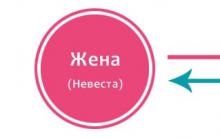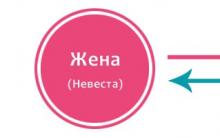14.1 Thermal mechanical solutions:
Boiler room with hot water boilers, Vitoplex 200 SX2A 1.1 MW, with Weishaupt burners (modulating).
Thermal loads:
Primary requirements:
Installation of an automatic chemical water treatment system in accordance with the analysis of the source water;
Provide heating and hot water supply to consumers according to an independent scheme through plate heat exchangers installed in the boiler room;
Provide engineering networks with connection to existing heating networks for the following consumers:
2. Control building
3. Bomb shelter;
4. Rigging warehouse;
6. Warehouse IX;
8. KOF building
10. Building
11. Club of port workers.
(according to the scheme of the heating network).
To replace the underground 4-pipe heating network of heating and hot water systems to the buildings of change houses No. 1, No. 2 and the 2-pipe hot water system to the Inter-club with above-ground heating networks;
Make a hydraulic calculation of heat networks to link all points of heat supply in static and dynamic modes of operation.
Provide for the installation of two storage tanks, with a volume of V=25m 3 each. The process of heating, heating and distribution of hot water must be carried out automatically;
Provide in the boiler room stop valves(ball valves, butterfly valves);
Provide for the installation of metering units for generated and supplied thermal energy, as well as a metering unit for water consumption (technical accounting);
When designing a laundry, take into account the possibility of installing existing equipment.
14.2 Internal gas equipment and automation:
Design the operation of the boiler house in automatic mode, without the constant presence of maintenance personnel;
Provide the ability to remotely monitor and control the operation of the boiler room equipment from the control room;
Equip the control room with devices that provide remote control and management of the operation of boiler equipment, in real time - the designed boiler house, the existing boiler house, as well as other boiler houses, design and construction, which will be possible to be carried out in the future. The location of the control room should be determined during design;
Detailed selection gas equipment perform after receiving the technical conditions for the gas supply of the boiler house, taking into account the physical parameters of the gas pressure in the winter and summer time, pressure losses in the supply gas pipeline, gas reduction and metering units;
In the boiler room, provide for the installation of a commercial gas consumption metering unit with the possibility of remote information retrieval (GSM modem), as well as regulatory and security facilities.
Provide for a gas contamination alarm with shutting off the gas supply to the boiler room when the specified concentration of CO and CH4 in the air of the working area is reached.
14.3 Chimney:
The removal of flue gases from the boiler room is carried out through an individual heat-insulated chimney, without stretch marks. Metal shafts, the number, height and diameter of pipes to be determined during design;
Perform lightning protection of the chimney, perform anti-corrosion coating taking into account the aggressive properties of flue gas condensate.
14.4 Ventilation and air conditioning system:
Provide supply and exhaust ventilation;
14.5 Water supply and sanitation systems (internal and external):
As part of project documentation develop water supply and sanitation systems;
Organize an introductory water meter unit and a separate one for the laundry (technical accounting);
At the boiler house, provide a cold water reserve tank with a volume of V \u003d 1-2 m 3, to feed the heating networks in case of an interruption in water supply;
Provide for the connection of sewerage to existing networks;
Due to the low pressure of network water (from 1-6 kg / cm 2), provide a booster pump at the inlet of the water supply.
14.6 External power supply:
Provide for laying two cable lines from TP-20 (main and reserve) section and type to be determined during design;
At TP-20, install circuit breakers for 0.4 kV.
14.7 Internal power supply:
At the inlet switchboard of the 0.4 kV boiler room, provide ATS;
Provide protection against short-term interruptions in the power supply of automatic boilers and burners (up to 5 seconds), in order to avoid unplanned shutdown of boilers and pumps due to unstable power supply (frequent power surges and drops).
Provide the ability to automatically turn on technological equipment according to a given program after the restoration of power supply;
Re-grounding of the electrical equipment of the building;
Provide electricity meters (technical accounting);
In electrical panels, install Legrand circuit breakers and ensure a reserve in quantity of at least 25%;
To reduce the ripple coefficient, connect luminaires with fluorescent lamps from different phases and use luminaires with an electronic compensating device;
Use flame retardant electrical cable NYM or VVGng.
Provide automatic switches with an independent fire alarm release to turn off ventilation and air conditioning systems in case of fire;
14.8 Fire alarm:
Develop a fire alarm (fire extinguishing system) in accordance with the current rules and regulations (SP6.13130.2009 "Fire protection systems ELECTRIC EQUIPMENT Requirements fire safety»).
14.9 Design of communication networks:
From the existing telephone well K427v, lay a two-hole telephone sewer from a / c pipes Æ 100 mm (L = 40x2m);
Design a new telephone well KKS-2 with a heavy type hatch (GOST 8591-76) with a lower steel cover designed for installation on the roadway;
Lay a two-hole telephone sewer from a / c pipes Æ 100 mm (L = 20x2 m) to the designed boiler house from the newly new telephone well;
Near the boiler house, provide a telephone well KKS-1 with a middle-type hatch with a lower steel cover with the “Communication” logo and make an external telephone outlet with a metal pipe Æ 75 mm;
Telephone wells should be made with cast-iron consoles KKCH-2;
Lay a telephone cable TPPepZ 10x2x0.5 (L = 150 m) from the existing communication switchboard Bytovka No. 1 to the planned boiler house;
Lead the cable into the building and terminate it in KRTM-V/10-P with a breakable plinth KRONE 2/10 LSA-PROFIL;
In the communication cabinet of change house No. 1, terminate the cable with a KRONE 2/10 LSA-PROFIL plinth with break contacts;
Subscriber wiring, indoors, with a UTP 4x2x0.5 cable of category 5 and terminate with RJ-11 6P4C telephone sockets;
14.10 Boiler room equipment:
Use imported equipment (equipment must be certified on the territory of the Russian Federation);
The equipment must have a permit for use issued by Rostekhnadzor.
14.11 Laundry equipment and furniture:
1. In the rest room, provide:
Electric stove;
Fridge;
Cooler (distributor of cold and hot water);
Microwave;
Dinner table;
Chairs - 7 pcs;
Cupboard for dishes.
2. In the washing department, provide:
Centrifuge for 50 kg;
Washing machine with a load of 10 kg (1 pc.);
Washing machine with a load of 30 kg (1 pc.);
Washing machine with a load of 40-50 kg (2 pcs.);
Dryer drum 16 kg - 2 pcs.;
Sorting trolley - 5 pcs.
3. Provide for the ironing room:
Ironing roller (electric) - 1 pc.;
Container for linen - 2 pcs.;
Ironing table - 1 piece;
Iron - 1 pc.;
Table for linen -1 piece;
Ironing press - 1 pc.;
Laundry trolley - 1 pc.
4. Provide for the following in the admission department:
Rack - 2 pcs.;
Floor scales - 1 pc.;
Work table - 1 pc.
5. In the department of storage and distribution of linen, provide:
Linen storage rack - 4 pcs.;
Work table - 1 piece;
Packing table - 1 pc.
6. In the department for receiving clothes, provide:
Work table - 2 pcs.;
Sewing machine - 1 pc.;
Overlock - 1 pc.;
Rack - 1 pc.;
Ironing table - 1 piece;
Iron - 1 pc.
7. In the pantry for storage detergents provide for:
- rack - 4 pcs.;
Desktop - 1 piece;
Container for detergents - 1 pc.;
Trade scales - 1 pc.
8. In the pantry of cleaning equipment, provide:
- bathtub for washing rags and equipment - 1 pc.;
Cabinet for storage of cleaning equipment - 1 pc.;
Wardrobe for overalls - 1 pc.
9. Provide for the drying compartment:
Racks for drying clothes (quantity to be determined during design);
Device for hot air (to be determined during design, the type of device to be agreed with the Customer).
10. In the waiting room for receiving and issuing linen, provide:
1 banquette per room.
11. Provide for the office:
Manager's desk with side cabinet - 1 pc.;
Roll-out cabinet - 1 pc.;
Head chair - 1 piece;
Side office chair - 4 pcs.;
Wardrobe - 1 piece;
Cabinet open for documents - 1 pc.;
The case closed for documents - 1 piece.
12. Provide for the dressing room:
Two-section cabinet - 7 pcs.;
Bench - 3 pcs.
13. Working hours of the laundry:
Five-day work week;
One working shift consisting of 4 people.
TERMS OF REFERENCE FOR THE DEVELOPMENT OF WORKING DOCUMENTATION "EQUIPPING WITH A COMPREHENSIVE AUTOMATED ELECTROMECHANICAL DEVICE DISPATCH CONTROL SYSTEM (CAS DU EM) OF THE PRIMORSKAYA STATION" Basic TEP 7. Special conditions CV Plan for 2014 Application No. 2126 Own funds Beginning: February 21, 2014 Completion: June 16, 2014 Working documentation 5.1. KAS DU EM of the Primorskaya station should provide control and monitoring of EM devices with AWP DSP station and AWP EMD CDU. 5.2. The design of the system must be carried out in accordance with the current PTE of the RF subways, ISI of the RF subways, GOST 34.201-89, SNiP 32-02-2003 "Metropolitans" and SP 32-105-2004 "Metropolitans", SNiP 1.02.01-85, PUE, NPB 11003, Rules of the fire regime in the Russian Federation of April 25, 2012, SP 2.5.1337 - 03, SanPiN, and other current regulatory and technical documentation. Dispatching control of engineering and technical equipment should be carried out from the EM dispatcher's workstation at the central control room and a duplicated EAF's workstation at the station. The list of control objects, control commands and signals generated by control objects necessary for output to the upper and station levels, the designer requests independently from the Customer. When developing working documentation, it is necessary to take into account the requirements of the following documents: Terms of reference "Integrated automated dispatch control system (CASDU) for the operation of the metro line", approved by the chief engineer of the metro on December 25, 2009 ) operation of the metro line”, approved by the chief engineer of the metro on August 12, 2013. “Concepts for the development of an integrated automated dispatch control system (KAS DU) for the operation of the lines of the State Unitary Enterprise Petersburg Metro”, approved by the chief engineer of the metro on June 4, 2010. 7.1. Linking station technical means KAS DU with CDU should be designed using TSSM channels (main and backup). 8.List of source documentation 9. Technical requirements 7.2. Take into account the laying of a backup information cable from the AS-sv cabinet to the room with the backup TSSM equipment. Placement of standby TSCM equipment is requested from the Information Technology and Communications Service. 7.3. Holding installation work connection/switching of the cable that poses a threat to the safe movement of trains must be carried out only at night (night window). 7.4. Specifications the designer requests for cable laying independently in accordance with the current "Instruction on the procedure for agreeing and performing work on laying cables in metro structures." 7.5. The designer requests all the information necessary for the design on his own. 7.6. Requirements for the Contractor: - The Contractor must have at least 3 years of experience in performing similar work; - The Contractor must involve, during the term of the contract for the performance of this work, persons who have the citizenship of the Russian Federation and / or persons who have an official permit to work on the territory of the Russian Federation; - The contractor is responsible for involving in the performance of this work persons who, in accordance with Art. 10 of the Federal Law of 09.02.2007 No. 16-FZ “On transport security”, due to the established restrictions, are not accepted for work related to ensuring transport security, when determining the procedure for organizing work, be guided by the current “Instruction on the procedure for performing work by third-party organizations in operated facilities of the St. Petersburg Metro. 8.1. Layout of the equipment in the control room of the CAS control room at the Primorskaya station. 8.2 Functional characteristics of CAS DU EM (Appendix to this specification). 9.1. Perform the linking of the station technical means of the KAS DU with the CDU via the TSCM channels (main and backup). 9.2. Provide for the linkage of the EM equipment with the designed cabinet AS-4 of the KAS DU system. 9.3. To link the designed AC-4 cabinet with the objects of control and monitoring of the EM, provide a cabinet of transitional relays (TPR). The location of the SPR cabinet should be determined during design. 9.4. Provide for connection of KAS DU EM devices to the existing AC-sv cabinet and to the uninterrupted power supply system of KAS DU. 9.5. Provide for the connection of the AC-sv cabinet to the backup TCSM channel. 9.6. The need to use optical communication lines is to be determined during design. 10. Safety requirements for technology 11. Environmental requirements 12. Requirements for the introduction of new equipment and materials. 13. Requirements for a license or certificates for the right to perform design work 9.7. Provide for the dismantling of VRTF equipment and unused cables in the premises of the Electromechanical Service and DSP. 9.8. Provide for work on the restoration of the cladding, painting and cleaning of surfaces from dirt in the area of dismantled equipment. 9.9. When designing, use the existing cable network from control and monitoring facilities. 9.10. If necessary, provide for the installation of cable passages with the installation of embedded cable sleeves in places where cable routes pass through the walls of the floor, their sealing with non-combustible materials that provide the required fire resistance and cosmetic finishing of walls and floors. 9.11. If it is necessary to lay cable channels in the passenger area, provide for their installation in the color of the cladding. In accordance with SNiP 12-03-2001, 12-04-2002 "Labor safety in construction" and in accordance with the requirements of the PUE and Intersectoral rules on labor protection (safety rules) during the operation of electrical installations. 11.1. Develop as part of the working documentation: 11.1.1. Section "List of measures for environmental protection". 11.1.2. Draft Technological Regulations for Construction Waste Management. 11.2. The sections "List of measures for environmental protection" and the draft Technological regulations for the management of construction waste should be coordinated with the environmental protection sector of the Electromechanical Service. 11.3. Generation and disposal of waste at the expense of the customer's limits. 12.1. In the project, provide for the use of mass-produced materials that meet the requirements of the documents specified in clause 6 of this Assignment, as well as sanitary and hygienic, fire safety requirements and have the appropriate certificates; 12.2. Provide for the use of effective modern technologies, materials and equipment. A valid certificate of admission to work that affects the safety of facilities is required. capital construction in accordance with the order of the Ministry of Regional Development of the Russian Federation of December 30, 2009 No. No. 624 with a mark on admission to work on especially dangerous and technically complex facilities on the points: - Works on the preparation of projects for internal dispatching, automation and management of engineering systems (clause 4.5) - Works on the preparation of technological solutions for metro facilities and their complexes (6.13. ) - Works on the preparation of draft measures to ensure fire safety (clause 10) The general contract is not provided. 14. Composition and requirements for Working documentation consists of text and content of the project graphic parts. Project composition: 14.1. Explanatory note. 14.2. Information about engineering equipment, about networks of engineering and technical support, a list of engineering and technical measures, the content of technological solutions. 14.2.1. Power supply system: - Scheme external connections equipment on site. - Scheme of cable connections. - Plan of the cable network. - Principal and wiring diagrams for connecting equipment to the system of uninterrupted power supply KAS DU. 14.2.2. Communication networks: - Diagram of a local computer network. - Scheme of cable connections. - Cable network plan, cable magazine. 14.2.3. Technological solutions: - Placement of equipment at the facilities. - Placement of equipment in the control room of KAS DU. - Placement of equipment in the chipboard. - Principal diagrams of cabinets AC-4, ShPR and AC-sv. - Wiring diagrams of cabinets AS-4, ShPR and AS-sv. - Code distribution tables. - Schematic diagrams of management, control of terminal devices "EM". - Mnemonic diagram of AWP DSP. 14.3. List of measures for environmental protection (including the draft technological regulations for handling construction waste). 14.4. Measures to ensure fire safety. 14.5. Hardware Specification. 14.6. Bill of quantities of work. 14.7. Estimated documentation: - local estimate for dismantling works. - local estimate for construction and installation works, - local estimate for commissioning. 14.8. List of measures for environmental protection (chapter "Waste management, list and calculation of the amount of waste generated in the course of work." 15. Registration requirements budget documentation Decree of the Government of the Russian Federation of February 16, 2008 No. 87 "On the composition of sections of project documentation and requirements for their content." in the format 16. Requirements for the preparation of estimates of the SmetaWizard program. » using the budgeting program certified by the Gosstroy of the Russian Federation-Estimated WISARD. Estimates must be drawn up in basic prices on 01.01.2001. using the estimated cost recalculation indices for direct cost elements at the time of delivery of design work, approved by the Economic Development Committee, industrial policy and trade. 16.2. The cost of materials not included in the prices should be determined on the basis of the “Territorial collection of estimated prices for basic materials, products and structures used in construction. Petersburg" (TSSC) at the time of delivery of design work, if the required item of the material is not available in the SSSC or the cost of the material in the TSSC has a significant deviation from the current market price of this material, then the cost is determined based on an analysis of the current average city prices for this type of materials (an analysis of average city prices is agreed with the Customer and is attached to the estimate documentation). 16.3. Estimates must be agreed with the department for organizing the procurement of products for the needs of the subway of the Directorate (OOZ). The originals of the agreed estimate documentation are transferred to the customer. 17. Approval procedure 17.1. Working documentation should be submitted to the design and estimate documentation for consideration and approval no later than 01.07.2013. 17.2. The approval of design and estimate documentation is carried out in accordance with the "Procedure for the approval of design and estimate documentation in accordance with the work of the capital investment plan", put into effect by Order of the head of the subway No. 1226 dated 12/24/2012. Documentation must be approved by the following departments: Signaling, Centralization and Blocking Service, Power Supply Service, Subway Control Service, Information Technology and Communications Service, Electromechanical Service. 17.3. Estimated documentation is accepted for consideration by the Department of Public Health Protection after the approval of all sections of the project by the involved departments. 17.4. Project expertise is not required 17.5. The work is considered completed after the Customer receives a complete set of agreed 18. Clarification of the task and design estimates and signing the technical act of acceptance of the work performed. addendum This assignment may be specified and supplemented in the prescribed manner by agreement of the parties. Appendix to the terms of reference for the development of working documentation "Equipment of the Primorskaya station with an integrated automated dispatch control system for electromechanical devices (KAS DU EM)" 1. Functional characteristics of the KAS DU EM: KAS DU with AWP DSP station and AWP dispatcher EM. Reception of information from EM objects through SPR and AS4 cabinets and its transmission in accordance with the protocols of the KAS DU to the AWP and EMD AWPs. Formation of protocols of events in KAS DU. "Hot redundancy" of hardware and software. Management and control of the devices of the EM station from the AWPs of the DSP and EMD (according to the codes distribution tables). Applied software Workstation for chipboard, EMD and cabinet AC4 should function under Linux OS. Mnemonic diagrams on EMS and EMD workstations must repeat the station contours, contain designations and a set of control actions identical to similar workstations at other operating stations. 2. List of equipment. Purpose The CAS DU EM AS4 cabinet is responsible for interaction with the AWP EAF with EM objects Equipment composition The AS4 cabinet should include: 1. Two controllers with expansion boards based on ICP Electronics products (PAC-52, IP-6S). 2. Two power supplies based on IEI Technology products (ACE-890). 3. Two converters based on ICP DAS products (I-7520). 4. Two I/O modules based on IPC DAS products (I7060). 5. Cross-boards and boards of TS and TU with 100% redundancy based on the products of TsKZhT PGUPS (TS-72, UMV-64, TU48, UDO-48). 6. Circuit breakers with auxiliary contacts manufactured by ABB. Fig. 7. Scheme of switching of MPC sets based on a small-sized relay R4-1024 (manufacturer Relpole). 8. Schemes for controlling the opening of doors and the operation of automatic switches. 9. On the front panel of the cabinet: - Toggle switches for disabling sets with LED indication of operation. Buttons for switching sets of MPC without fixing. Intermediate relay cabinet (SHPR) Automated workstation (AWS) DSP monitors the status and manages EM devices. 1. Relay (Relpol); 2. Diode block GBPC1506/ 3. Transformer 220/110 Two redundant sets consisting of: 1. LCD monitor 21 2. Rack industrial PC (2 U). 3. Dustproof keyboard and mouse. 4. Application software developed by TsKZhT PGUPS, system software based on Linux. Power consumption of each: no more than 1000 W; Power supply: 220 W, 50 Hz.
To date, the question arose about the need to create a system for dispatching power supply to an industrial facility under construction.
And everything would be fine, they hired a company, made a turnkey project, but there are a few BUT:
The construction of the facility does not take place in an open field, but within the framework of the existing infrastructure of the enterprise, i.e. it has its own branched operating power supply system, information computer network, there are ASKUE and the beginnings of a dispatching system for existing energy facilities.
The photo below is an example of the implementation of the mnemonic diagram of the dispatching system on light cubes. LED matrices are used as projectors.

The first step was to create terms of reference for design. Usually, in such cases, they hire an organization that prepares such a technical task (TOR) taking into account the requirements and wishes of the Customer, and then choose design organization. In my case, this task had to be done practically by myself. I will not hide, I collected information through various sources; seminars, consultations with companies and specialists in this area, visits to existing similar facilities, not without the participation of the worldwide network. Here's what happened.
A little about theory. The dispatching system is intended for:
- integrated automated control and management of power supply in normal, emergency and post-emergency modes;
- operational dispatch control and power supply management in real time;
- signaling and operational display of information about abnormal and emergency modes, operation of protections;
- planning and control of electricity consumption of the workshop, technical accounting.
From the many existing names of such systems and based on the required functionality, the name "Automated System for Dispatching Power Supply, Control, Planning and Technical Accounting of Electricity of the Workshop" was born. It was decided to shorten the name to the abbreviation ASU ES ( automated system power management).
The photo below is an example of the implementation of such projects.

The need to create an ACS ES described to achieve the following main goals:
- increasing the efficiency of management, reliability and quality of energy supply;
- reduction of unproductive costs of energy resources;
- providing personnel with information for analysis, optimization and planning of equipment operation and its repair;
- reducing the cost of diagnostics and repair of power equipment.
Characteristics of the object: three 6 kV substations with switchgear cells, several 6/0.4 kV package transformer substations, a fleet of medium and low voltage electric motors.
Since Evolis (Schneider Electric) vacuum circuit breakers were chosen as 6 kV switching devices, relay protection and automation are performed on the basis of digital devices relay protection Sepam series 40, 60 and 80. These devices allow you to implement a supervisory system on them without any problems. There are a number of SCADAs specially tailored for Sepam.

In the next article I will talk about block diagram ACS ES system, which we plan to implement in the project on the basis of the developed technical specifications.











How to make a bird costume with your own hands Carnival bird costume
Scenario for 25 years girl cool houses
Examples of serious nominations for rewarding employees
The script for the anniversary of the girl (young woman) "A star named ...
Comic nominations for a corporate party